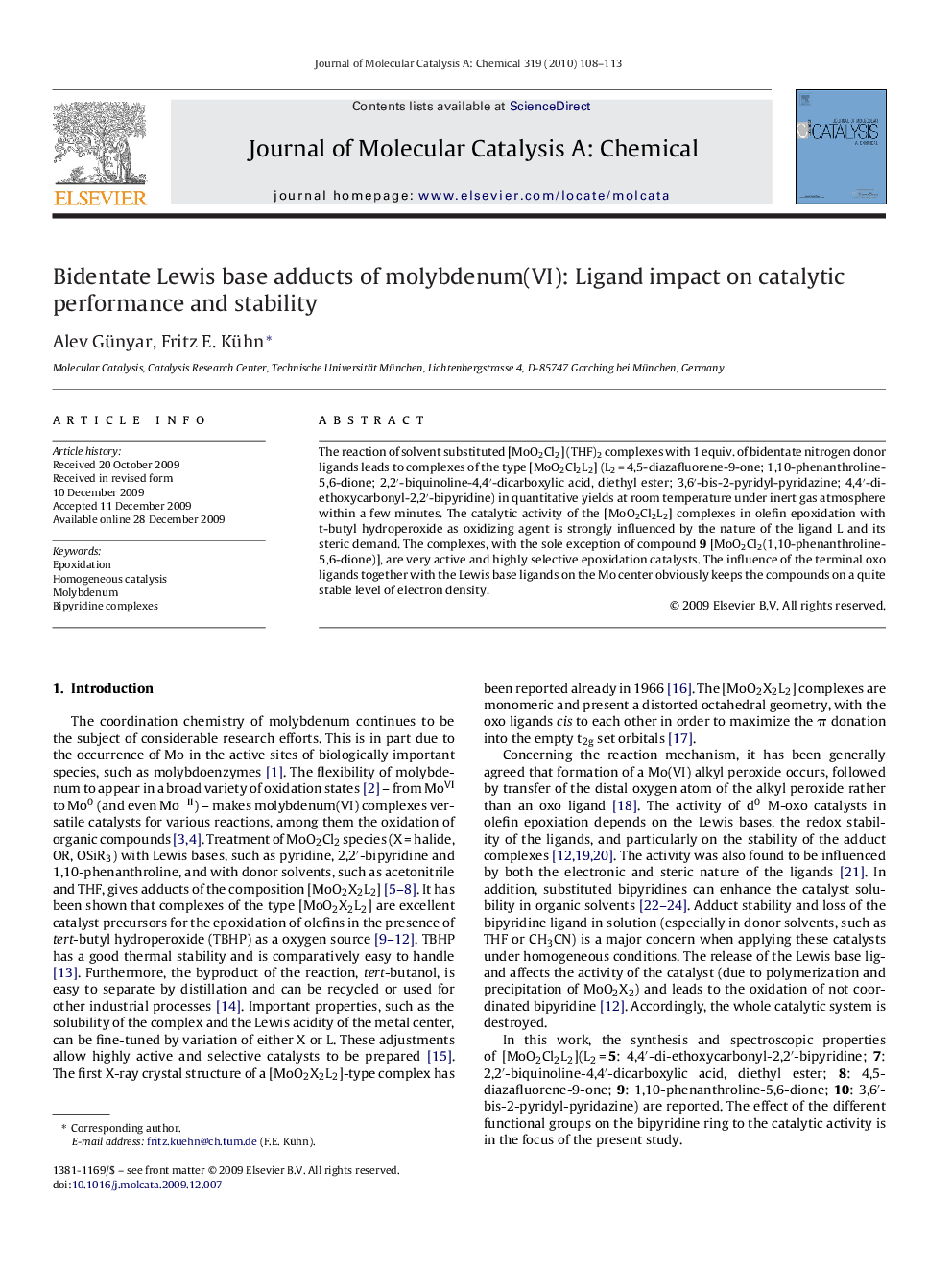| Article ID | Journal | Published Year | Pages | File Type |
|---|---|---|---|---|
| 66877 | Journal of Molecular Catalysis A: Chemical | 2010 | 6 Pages |
The reaction of solvent substituted [MoO2Cl2] (THF)2 complexes with 1 equiv. of bidentate nitrogen donor ligands leads to complexes of the type [MoO2Cl2L2] (L2 = 4,5-diazafluorene-9-one; 1,10-phenanthroline-5,6-dione; 2,2′-biquinoline-4,4′-dicarboxylic acid, diethyl ester; 3,6′-bis-2-pyridyl-pyridazine; 4,4′-di-ethoxycarbonyl-2,2′-bipyridine) in quantitative yields at room temperature under inert gas atmosphere within a few minutes. The catalytic activity of the [MoO2Cl2L2] complexes in olefin epoxidation with t-butyl hydroperoxide as oxidizing agent is strongly influenced by the nature of the ligand L and its steric demand. The complexes, with the sole exception of compound 9 [MoO2Cl2(1,10-phenanthroline-5,6-dione)], are very active and highly selective epoxidation catalysts. The influence of the terminal oxo ligands together with the Lewis base ligands on the Mo center obviously keeps the compounds on a quite stable level of electron density.
Graphical abstractMolybdenum(VI) complexes of the type MoO2Cl2 form adducts with bipyridine derivatives. The coordination of bidentate Lewis base ligands to Mo(VI) is governed by both electronic and steric effects due to the contributions of different functional groups on the bipyridine ligands. The bipyridine derived complexes show high catalytic activity and selectivity for cylooctene epoxidation.Figure optionsDownload full-size imageDownload high-quality image (38 K)Download as PowerPoint slide
